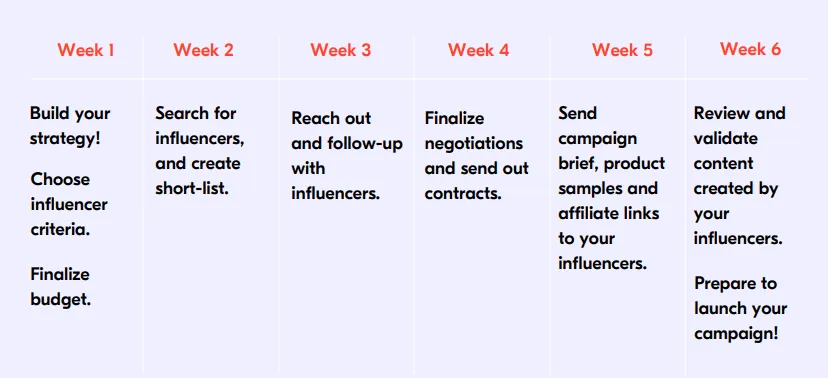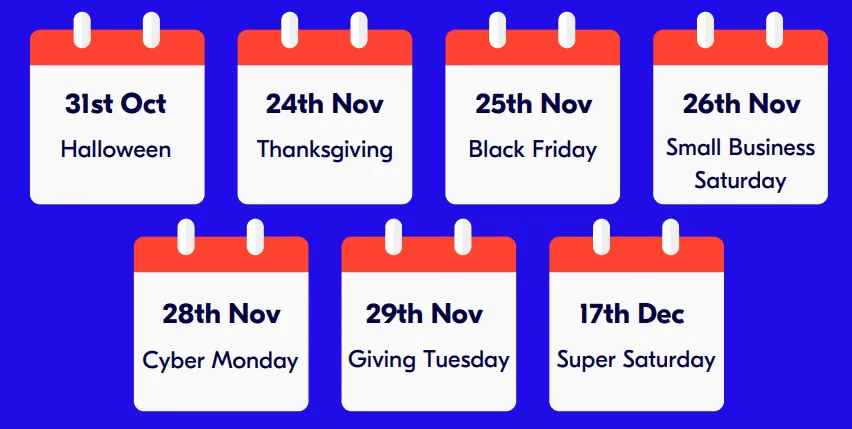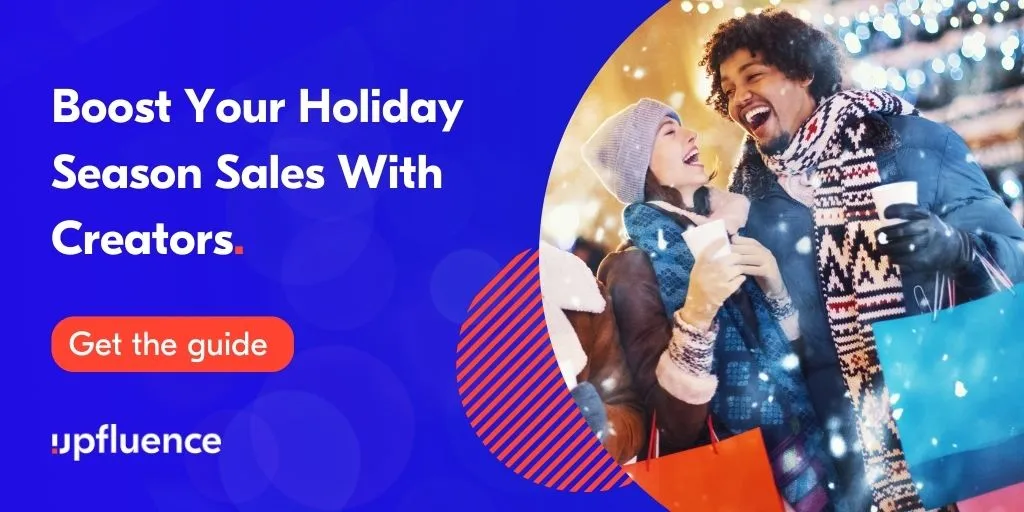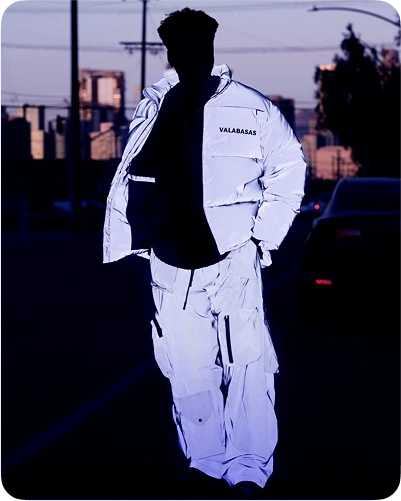I know what you’re thinking, there isn’t a whiff of pumpkin spice in the air yet, and you want me to think about holiday season marketing campaigns? But the clichés are true – the early bird does catch the worm. According to data from Insider Intelligence, 22% of adults have already begun their holiday shopping. Marketers need to meet shoppers where they are. If they’re already researching holiday gifts, then brands need to make sure that their holiday influencer campaigns are good to go as soon as possible!
With this in mind, Upfluence experts have put together the ideal timeline to follow your holiday influencer campaigns. At this time of year, timing is everything. You need to secure participation from creators who are highly solicited, as well as plan activations for key holiday season moments such as Halloween, Thanksgiving, Black Friday, and Cyber Monday.
Let’s explore how brands can plan for success with the ideal holiday influencer campaign timeline. Learn the key steps and what order they need to happen.

Week 1: Planning ahead
Build your strategy!
First things first, you need to define your strategy. That means deciding your goals, which KPIs you’ll measure, and how you’ll go about achieving your objectives. For example, if your goal is to maximize sales and smash your sales predictions, then you need to plan a campaign that utilizes promo codes and affiliate links to drive conversions.
Choose influencer criteria
With your campaign goals in mind, you can now choose which type of influencers are the best fit for your campaign. Which segment of your target audience do you want to reach, Which social media channels will you prioritize? These questions will help you decide your list of criteria for influencer selection. You also need to consider performance metrics such as follower count and engagement rate. For example, if you want to work with micro-influencers who are known for their string conversion rates, then you should search for influencers who have between 5K – 25K followers.
Finalize budget
The last thing to decide before you can start recruiting influencers is how you will compensate your influencers and how much you will spend. You need to know up-front if you will offer a flat fee, free products, a commission for sales, or a combination of all three. Knowing how much you can spend means you won’t lose time trying to negotiate with influencers whose fees are too expensive. What’s more, making an offer in the first outreach will incentivize influencers to sign up for your campaign.
Week 2: Find influencers
Create an influencer short-list
In the second week, you should dedicate time to finding influencers for your campaign. Using an influencer database such as the one available from Upfluence can help you to find influencers at scale by using 20+ advanced filters. Being able to search for influencer profiles according to platform, audience size, engagement rate, and industry niche helps brands to pinpoint exactly which influencers are the most suitable for their campaign.
Week 3: Influencer outreach
Reach out and follow-up with influencers
Next, you’ll need to send out personalized outreach messages to your short list of influencers. It’s crucial that the outreach process happens as soon as possible because creators are likely to be highly solicited for holiday season campaigns. To avoid disappointment, you need to get in there first! Be sure to follow-up after a couple of days if you don’t get a reply.
Week 4: Negotiation
Finalize negotiations
The back-and-forth communication of the outreach process may take more than one week, so be sure to continue sending out emails until you have secured enough partnerships for your campaign. Use week 4 to finalize negotiations and draw up an influencer agreement or contract to set out your expectations of the campaign. You should prepare a contract template in advance so you can simply adapt the contract to each new campaign. This will help you save time and get your campaign launched as soon as possible.
Week 5: Onboarding and preparation
Send out materials
Once you have the confirmed participation of your influencers it’s time to turn your attention to the practical elements of the campaign. This includes sharing a campaign brief that details the content expectations, key messages, and your list of dos and don’ts. Making sure your influencers receive the brief well in advance means they’ll have plenty of time to turn in high-quality content that matches your expectations.
At this stage you should also send out product samples, promo codes, or affiliate links – in short, any materials your creators will need to start drafting their content should be sent to them during week 5.
Be sure to communicate clearly about activations around key dates such as Black Friday, Cyber Monday, or Small Business Saturday. For the most impact, you should focus on consistency across content and tease your holiday discounts in the lead-up to big sales.
Here are some key dates to keep in mind for influencer activations.

Week 6/7: Content validation
Review and validate content
You will need to leave your influencers some time to create their content. If you’re working to a tight deadline then make it clear that you need content delivered within a short timeframe. The content creation phase can take a long time so be sure to factor in at least one or two weeks for this. What’s more, if you would like to review and validate content before it gets published, you need to account for this in your campaign timeline!
Week 8+ Monitoring & Optimization
Once your campaign has launched it’s time to monitor performance, troubleshoot problems, and ensure tracking is in place so you can measure the results from your campaign. For the duration of your campaign, you should monitor campaign performance in real-time using an analytics dashboard like the one offered by Upfluence. If you’re using affiliate links or promo codes, this will help you to keep track of sales and know which influencer is generating the most sales.
Stay in touch with your creators during the campaign to let them know what’s working well and share suggestions for optimization. This is the biggest sales event of the year, so every minute (and every optimization) counts!
Looking for more inspiration and practical resources to nail your holiday season marketing? Check out this jam-packed guide to Holiday Season Influencer Marketing.

























